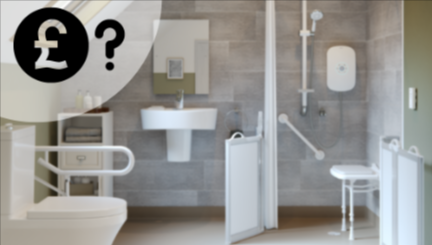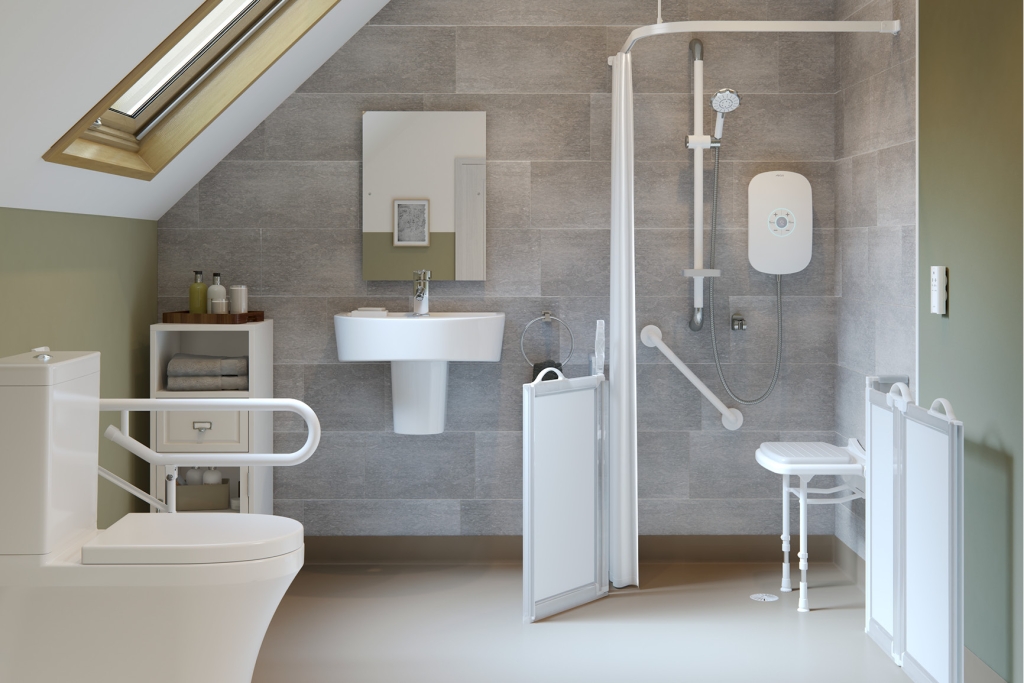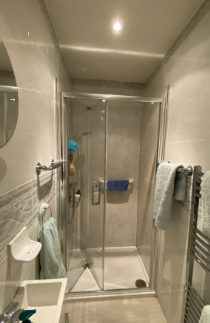The cost of a wet room in the UK can vary quite a bit depending on several factors, but you can expect to pay somewhere in the range of £5,000 to £15,000. Here’s a breakdown:
- Average cost: £10,000
- Low end: £5,000
- High end: £15,000
Some of the things that can affect the final price include:
- Bigger bathrooms will naturally cost more to convert into wet rooms.
- High-end tiles and fixtures will add to the cost.
- Prices can vary depending on your location and the experience of the installer.
- Extras like underfloor heating or grab bars for accessibility will increase the price.
If you’re considering a wet room, it’s always best to get quotes so that you understand the full cost of what you are agreeing to. It is always important to ensure that there will be no hidden costs later down the line as well.
How much does a wet room cost to install
Wet room installations are unfortunately not a DIY project that you can take on yourself. When considering how much does a wet room cost, you must also take into account the cost of installation, since it is a complex job with drainage, waterproofing, tiling, sealing and more.
While the above price scale of wet room cost includes installation, consider that the following things could significantly increase the cost:
- If your existing bathroom has a timber floor that needs removal to create a proper base for the wet room floor former, this adds to the labor cost.
- High-quality waterproofing membranes and sealing materials can be more expensive, but they are crucial for a long-lasting and leak-free wet room.
- The size and type of tiles you choose can significantly impact the cost. Larger tiles or high-end materials like natural stone will be more expensive than smaller, standard tiles.
- A basic shower head and controls will be cheaper compared to a complex rainfall shower system or a steam shower.
- Adding underfloor heating is a luxury that adds to the overall cost. The cost depends on the size of the area and the type of heating system used.
- The experience and location of the installer can also affect the overall price.
Remember to find the right balance. While some cost-saving options exist, it’s important to prioritize quality materials and qualified professionals for the crucial waterproofing and drainage aspects to avoid future leaks and potential damage.
How much does a disabled wet room cost
A disabled wet room can cost significantly more than a standard wet room, typically ranging from £10,000 to £15,000 compared to £4,000 to £10,000 for a standard one. The price difference comes down to the additional features and considerations needed to create a safe and accessible environment for users with limited mobility, especially since:
- Compared to a standard wet room, a disabled wet room typically prioritizes a larger floor area. This allows for easier maneuvering of wheelchairs or walkers and provides more space for caregivers to assist if needed.
- Strategically placed grab bars near the shower, toilet, and around the room provide additional support and balance for users. These bars need to be securely mounted to support a person’s weight.
- A fixed or fold-down shower seat allows users to rest safely while showering. This can be particularly important for those with limited stamina or balance.
- A disabled wet room might include a toilet installed at a higher level than a standard toilet. This “comfort height” toilet makes it easier for users to sit down and stand up.
- Wider doorways and larger turning circles within the wet room are often incorporated to ensure wheelchairs can easily navigate the space.
- The type of flooring used in a disabled wet room is crucial. Extra attention is paid to ensure the tiles or flooring material has a high slip resistance, even when wet, minimizing the risk of falls.
Ideally, this flooring should come with a warranty, because if it does start to lose its non-slip operating, it could cause a major accident for a person with limited mobility.

Can wet rooms save money in the long run
Overall, wet rooms can be a worthwhile investment if you consider them a long-term addition to your home.
The potential for reduced maintenance costs, increased durability, and potentially higher resale value can outweigh the higher initial installation cost.
However, careful planning, using qualified professionals, and considering the long-term benefits are crucial for maximising the cost-saving potential of a wet room.






